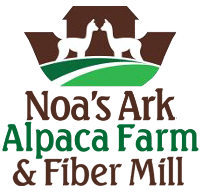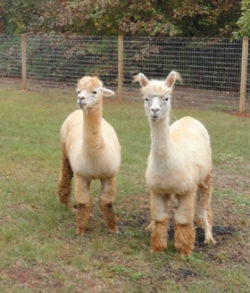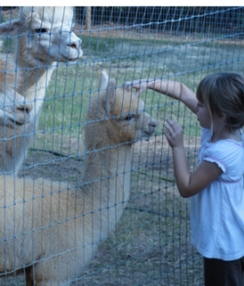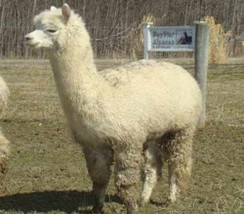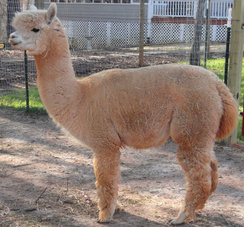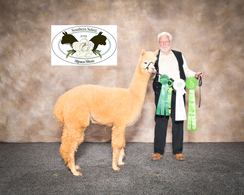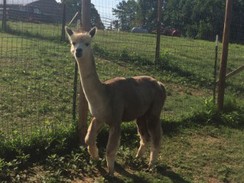About Alpacas
About Alpacas
Alpacas are in the Camelid (camel-id) family related to llamas but are smaller in size and originated with the Incas in south America. The alpaca is bred for its luxurious, sought after fleece which is spun into soft garments such as coats and sweaters. Their luxurious fleece was actually originally referred to by the Incas as the “Fiber of the Gods”.
The Alpaca animal is a clean, hardy animal, that is very intelligent, calm and easy to raise and manage, with a dense, quality fiber coat. An absolute joy to watch! Alpacas graze on pasture grasses and hay, keeping their food requirements relatively inexpensive. Just add a daily mineral supplement to complete their diet.
Alpacas Vary in Color
The Alpaca comes in a range of colors, patterns and textures. There are 22 recognized colors ranging from very white to dark black with a wide range of grays and browns. Patterns of the fiber are both light and dark. And the textures range from two categories of Alpaca:
- Huacaya: (wah-ki-ah) Fluffy, short , dense, crimpy fibers resembling wool
- Suri: (sir-e) Long and luxurious silky fibers with pencil-like locks
Alpaca Farm Management
Raising Alpacas is not difficult as they are easy to maintain in fenced pastures. These gentle Alpacas are about 36″ at the withers and can weigh between 100-200 pounds, and can live between 15 to 20 years. The longest document lifespan is 27 years. These quiet and tame animals only require a small acreage to survive. Alpacas have soft, padded feet that are gentle to pastures.
Many farms and ranches have other forms of livestock or crops and find it quite easy to add a small herd of Alpaca to their farm’s assets as they need so little acreage and are quite easy to maintain, while at the same time offering a nice profit from the shearing of their soft and luxurious fiber. Shearing of the alpaca coat occurs once a year, and each animal produces approximately 5-10 pounds of fiber per animal per year. The fleece itself is recognized globally for its fineness, softness and excellent thermal qualities and luster.
Income From Cria
Another form of income from raising Alpacas is from selling stock. Female Alpaca’s pregnancies last approximately 11 – 11.5 months and they only have one baby at a time, twins being a rarity. In most cases, Cria (cre-a) are born without intervention and usually during the daylight hours. A cria normally weights 15-19 pounds and is usually standing and nursing in 90 minutes of birth! A small herd of Alpaca can easily be expanded to a large, very profitable herd quite rapidly. Noasarkalpacafarm.com (noahsarkalpacafarm would be a mispelling) welcomes your questions.
Noa’s Ark Alpaca Farm encourages online viewers to contact us to learn more about raising Alpacas, or to set an appointment to visit our farm to see the animals. We specialize only in the Huacaya breed of Alpaca as their fiber is the most sought after and makes such an incredible product.
We are currently not open for visitors. Please check back at a later date.
Sunday, March 5, 2023
